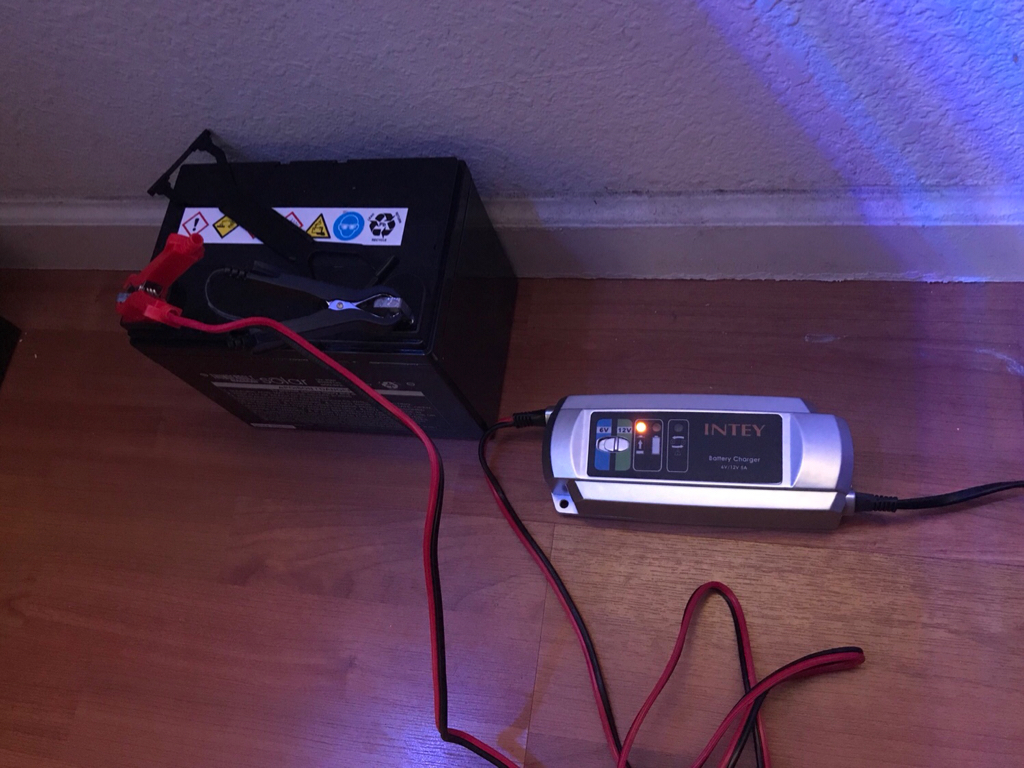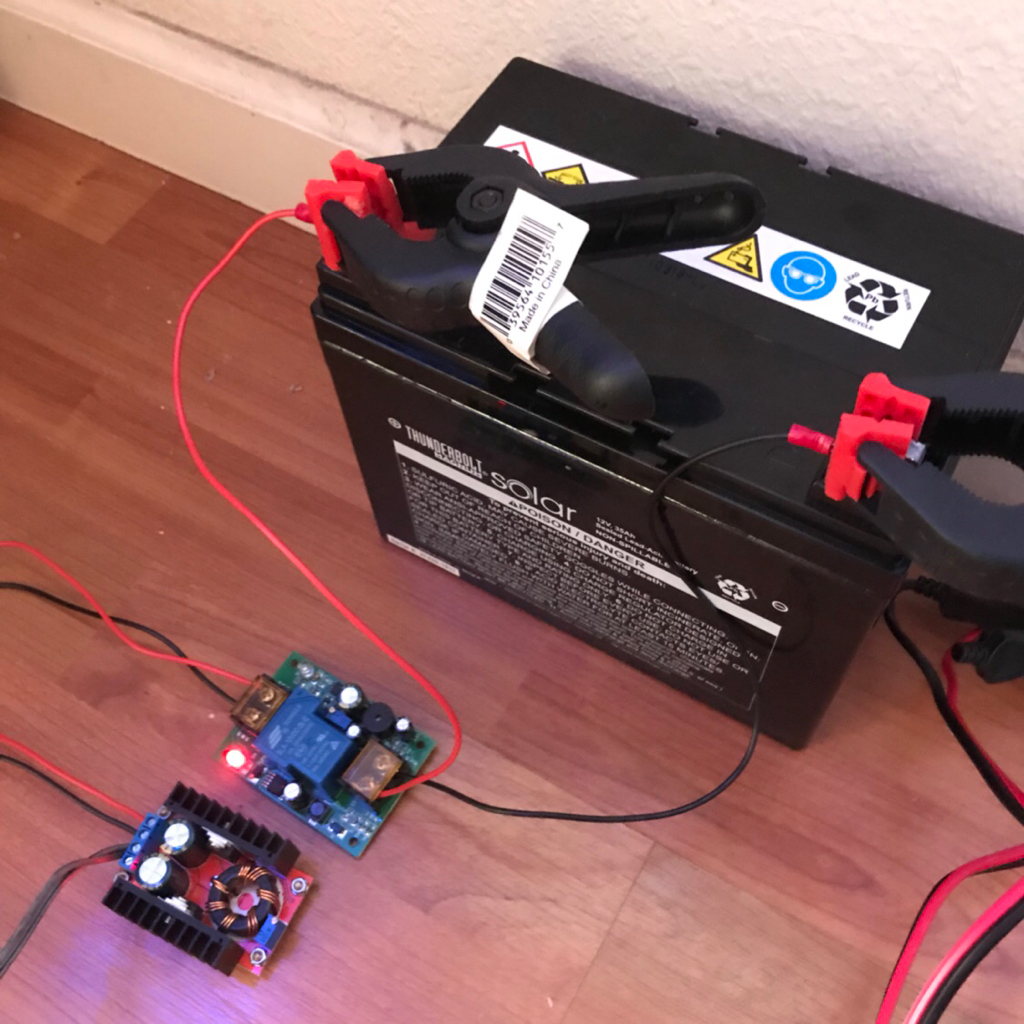@Finatik Inverter/chargers are not my personal preference, but they will certainly work just fine for this application. It's really all you will need beside a battery. It incorporates all the parts you need to make this system work. I would only order 1 inverter/charger, unless you plan to have a separate battery/battery bank for each. Since each inverter/charger will try to charge the batteries when the power is on, you may get some unexpected results from two chargers trying to run at once. Unless they're dumb float chargers and all they do is float the batteries to a certain voltage. But unfortunately, there's no way to know what mode of charging these things will use.
The batteries will be the real deciding factor in how long your system runs. Ideally, you should get a Kill-A-Watt to measure how much power all the components you want to run will draw. Because you're talking about a rather expensive system, I personally would not try to plan capacity without knowing exactly how much power you need. If you use Apex controllers, you might be able to tell your power usage from the controller.
If I can talk you out of running the heaters on the battery backup, I would. Unless you live in a cold area, the tanks will likely not cool down very much. Additionally, heat is not usually an emergency unless we're talking about several days of power loss and very cold temperatures (in the 60*s). There's no reason you couldn't run the heaters on batteries, but it's going to eat a lot power.
I've created a calculator to make finding the power requirements of battery backup systems easier. It can be found here. Simply plug in the wattage of your equipment, how many hours you want it to run, and the calculator will give you the amount of amp hours you need. The inefficiency and discharge limits can be changed, but those two values are good estimates. If we use 100W as your load and a 24 hour run-time, the calculator says you need 275 Ah of battery power. This battery is 100Ah, so you would need three of them in total (100Ah * 3 = 300Ah) to run 100W for 24 hours. You'd need to double the batteries for double the run time. Conversely, you could double the run time by reducing the load in half (running only 50W of equipment instead of running 100W).
If we assume your 1000W heaters only run half the time, they would increase the amount of batteries you need by roughly six times. The costs really start to add up quickly if you want 24-48 hours of run time. In my case, I run a 7W pump in my sump and a 7W pump in my display (a Koralia 425 and Jebao PP-4), so a single 100Ah battery will give me 60+ hours of runtime. You can certainly buy as many batteries as you can afford and this system will work. But at a certain point, a solution like Tesla's Powerwall may actually be more economical.
Hi @chipmunkofdoom2 and @Brew12
So I've already purchased two of the 2000W Inverter/Chargers by Renogy (one for each of my 120Gs).
@chipmunkofdoom2 you mentioned that this particular model wasn't your personal choice. Why ? Is there something wrong with this particular model ?
Can the Inverter be out in the open inside my fish room, or should I build some type of enclosure for it ?
Also, what type of unexpected results might I encounter from running both of them at the same time ? If there is a prolonged power outage, I will want to be able to power the critical components for both of the 120Gs to keep my tank inhabitants alive. I plan to have seperate batteries for each one.
Lastly, is there a particular battery that you recommend I use with the Inverters I have in order to achieve the results I'm looking for (as mentioned in my previous post above) ?
Sorry for all of the questions, but I just want to make sure I do this correctly AND in the safest manner.
Thanks again for your input and assistance with this. You guys are awesome !
Last edited:




















